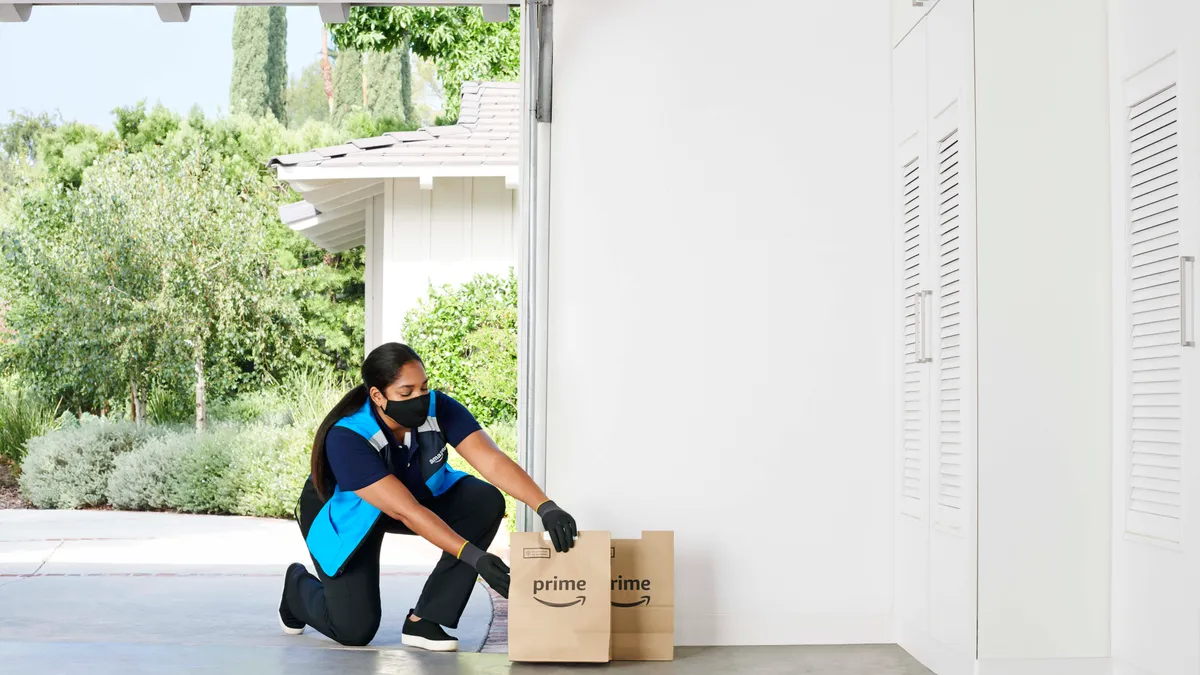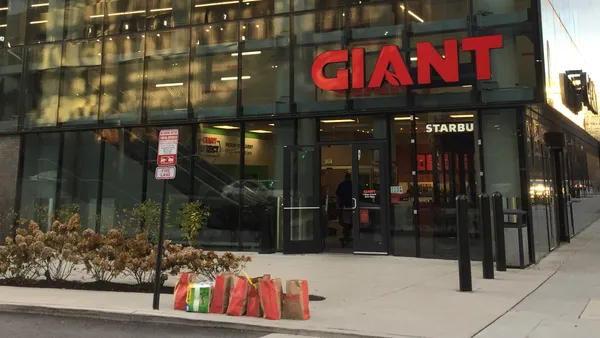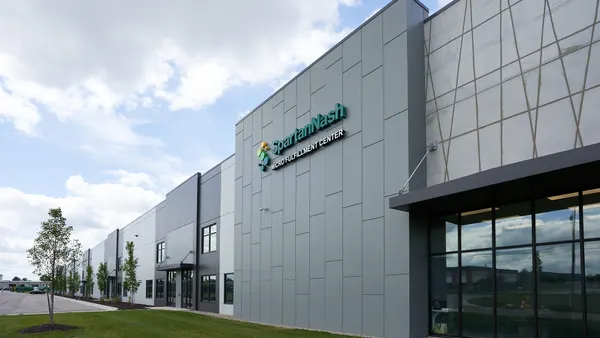Pardon the Disruption is a column that looks at the forces shaping food retail.
In its faltering but determined quest to wedge its way into the lineup of top U.S. grocers, Amazon recently issued a few notable updates.
This included news that Amazon Fresh will continue to update its struggling stores under a new model that refocuses the fledgling chain on Grocery 101 principles, with an eye toward reigniting growth next year. The company also announced an expansion of Amazon Fresh delivery and pickup to non-Prime members — a move that sounds like a bigger deal than it actually is, considering the loyalty program’s colossal reach.
These moves center on the bricks and clicks that are the foundation of the company’s food retailing strategy. But there was also a third announcement about a different workstream that Amazon is running in grocery. It generated fewer headlines yet deserves a thorough discussion.
Tucked into its e-commerce announcement, Amazon mentioned that it had recently expanded its marketplace and delivery partnership with Weis Markets. The integration, under which Weis lists its assortment on Amazon.com and relies on Amazon delivery drivers to ferry goods to shoppers’ homes, is now available in cities across four of the seven states Weis operates in.
Weis is also the first grocer to integrate its loyalty program with its Amazon digital storefront. Shoppers can link their Weis loyalty account to their Amazon account and earn points they can redeem in-store, or for fuel at one of Weis’s gas stations.
Amazon isn’t new to operating as a third-party e-commerce provider for grocers. In addition to Weis Markets, it has also linked up with a smattering of West Coast companies, including Cardenas Markets, Bristol Farms and The Save Mart Companies. Go back several years — what feels like a lifetime in the world of online grocery — and Amazon was jostling with Instacart to sign e-commerce deals with grocers.
Amazon hasn’t made significant progress as a 3P provider in grocery. But I think its role here takes on renewed significance in light of its recent progress with Weis and others, and because its grocery ambitions have become clearer in recent years.
Although Amazon’s store and online strategy are still very much works in progress, 3P operations offer a third way for the company to get into shoppers’ carts. It also provides a window into Amazon’s unique advantages and the way it’s thinking beyond just online and offline channels.
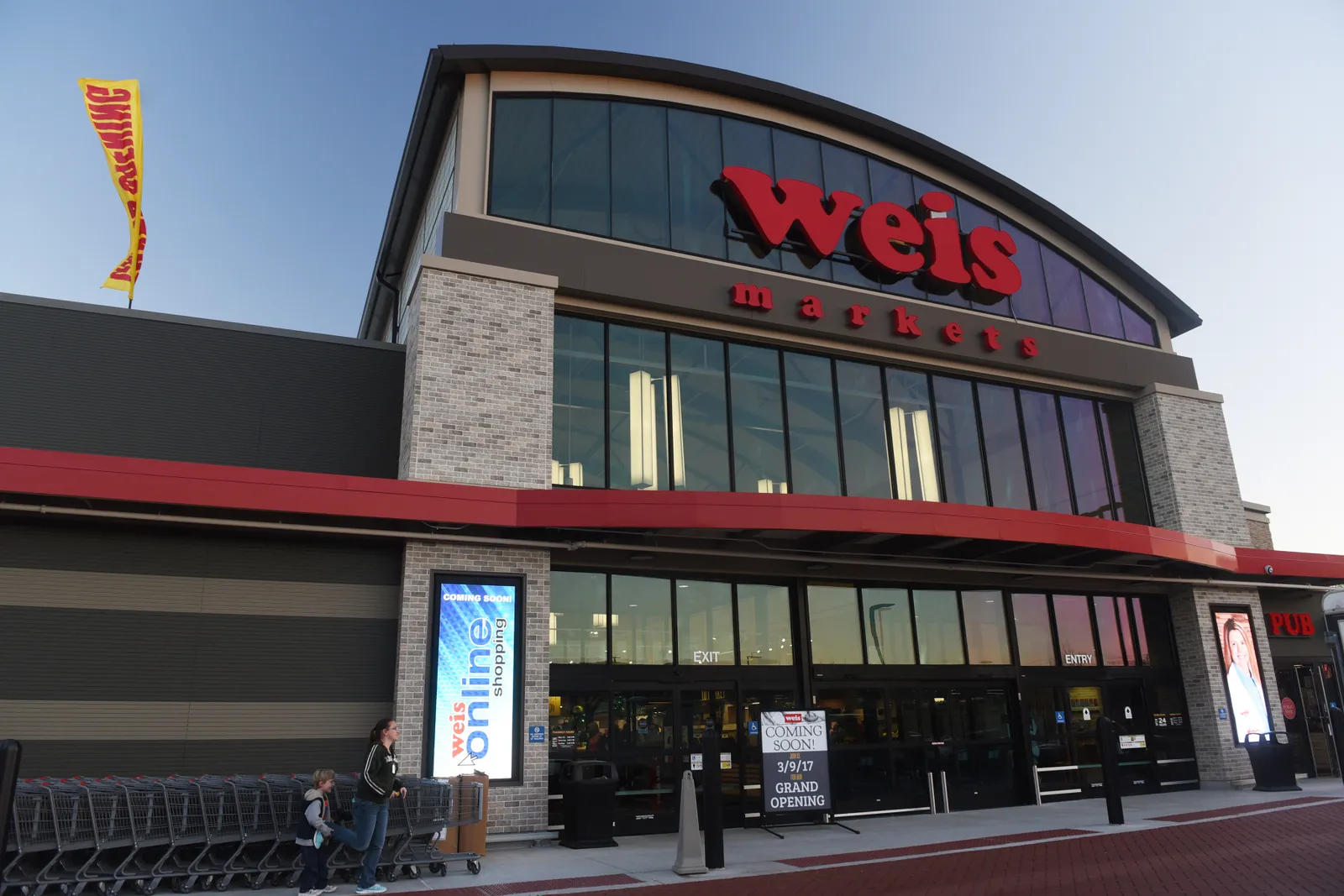
A third avenue for Amazon
Being a third-party partner for grocers has some clear benefits for Amazon in its evolving quest to expand in grocery. It allows the e-commerce giant to expand its reach without having to plant stores or distribution centers. That’s especially important right now, when Amazon Fresh is mired in a lengthy tuneup phase that’s approaching the one-year mark.
It also helps Amazon learn more about consumers’ shopping habits in grocery and burnishes its site as a destination for regular trips to grab more than just batteries, laundry detergent and an electric keyboard.
With its various food retail stores — including Whole Foods Market, Amazon Fresh and Amazon Go — Amazon is building an ecosystem where it can become a one-stop shop for grocery and all other consumer needs. Hosting other grocers is part of that total grocery vision.
Right now, when you shop under Amazon.com’s “Grocery” tab, a menu comes up with tiles linking to its nearby grocery stores and those of its partner companies. In Seattle, where I live, I can select Whole Foods, Amazon Fresh or All the Best, a local pet supplies store. Amazon no doubt envisions a virtual mall-like experience where people can shop across various grocery store brands — and all without having to leave the Amazon system.
The reasons why all this benefits Amazon, however, are the same reasons that many grocers will hesitate at linking arms with the online giant. It wasn’t so long ago that folks across the industry were up in arms about the idea that Instacart might become a retailer despite that company’s insistence to the contrary.
Well, in Amazon’s case we have exactly that. To riff on a metaphor that I saw during the Instacart freakout: The army isn’t hiding inside a Trojan Horse waiting to be wheeled into the city. It’s right outside in full regalia.
But retailers’ attitudes toward partnerships have evolved along with omnichannel shopping needs. Amazon also sells its palm-recognition technology and Just Walk Out frictionless checkout system to other retailers. It has become the “ultimate frenemy” for other retailers, Natalie Berg, a U.K.-based retail consultant and author of a book about Amazon, recently told me.
Walmart, meanwhile, has a GoLocal delivery service that counts Sur La Table and Books-A-Million among its users.
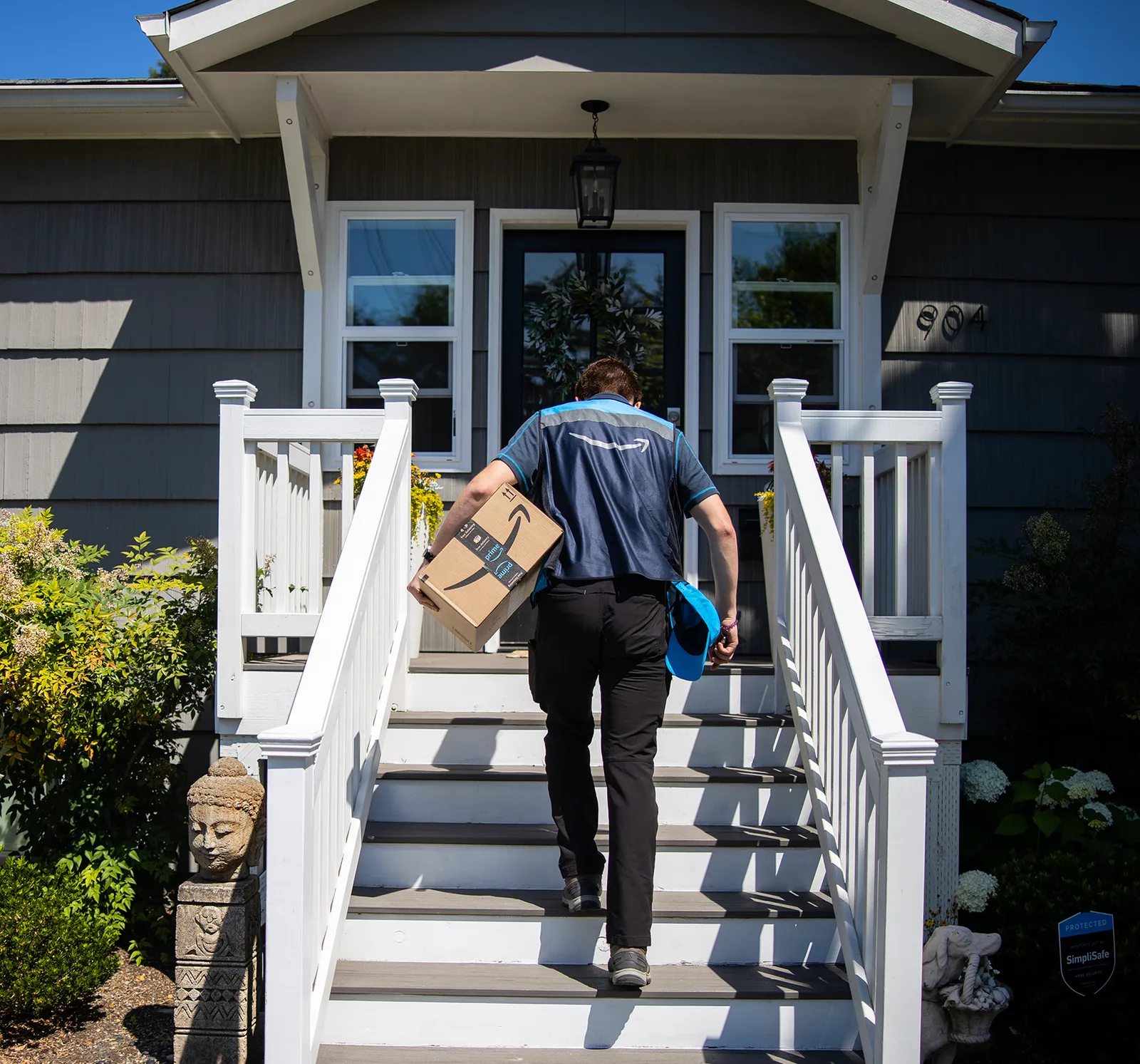
Marketplace partnerships are unique, however. Jordan Berke, a former executive with Walmart China and the CEO and founder of Tomorrow Retail Consulting, told me these are “some of the deepest partnerships because of the shared customer experience” they facilitate.
“Retailers are more reluctant to partner with a third-party marketplace where they don’t have a deep level of trust and see long-term cooperation potential,” Berke said. “Because in some ways, they’re opening up their most valuable asset, which is that customer relationship.”
It’s worth noting that Amazon has had considerable success signing grocers in the U.K. to its marketplace. It now counts three major chains that span a range of formats — Co-op, Morrisons and Iceland — as partner retailers. Two of those, Iceland and Waitrose, signed up within the past few months.
This momentum abroad coupled with the addition of Save Mart and Weis in the U.S. makes me wonder if Amazon is gaining steam as a 3P grocery marketplace. Or will that momentum fizzle out amid retailers’ competitive concerns?
Will other grocers follow Weis?
At this point, I’m not sure grocers need another third-party marketplace. What can they achieve with Amazon that they can’t with dedicated online providers Instacart, DoorDash and Uber?
Sure, Amazon has a wider reach than any of those providers. I’m willing to bet, however, that most people who would use Amazon to shop online for their favorite local retailer already do so on one of the three major marketplaces.
Those concerns about fueling a major competitor are also very real. Amazon is determined to crack the code on grocery retailing and become a weekly shopping destination for millions of Prime shoppers. Its store strategy stumbled out of the starting gate, and its online shopping experience lacks cohesiveness. But this company has testing, failing and improving encoded into its DNA. It will get better. It will pull shoppers away from other grocery stores, and a lot of companies probably don’t want to help it level up faster.
Still, the fact that Weis has not only jumped on board with Amazon but has expanded its partnership seems like evidence that a tie-up can be beneficial for other regional grocers, no?

According to Berke, Weis has some distinct qualities that make it more amenable to partnering with Amazon. Most of its stores are in rural or “deep suburban” markets where Amazon Fresh likely won’t tread, he noted. Weis also hosts Amazon Lockers at numerous stores, meaning many customers are already interacting with an Amazon service through Weis.
Berke said that because Weis operates in less populated areas than many other chains, it has outsourced most of its delivery operations to e-commerce providers like Shipt, DoorDash and Instacart.
That mixture of favorable conditions for Amazon will be hard to replicate elsewhere.
“We think Amazon is going to struggle to find a lot of Weis’s out there,” said Berke.
As for Save Mart and Bristol Farms joining up with Amazon — I’m not quite clear on the strategy here and neither is Berke. Since it was acquired by private equity firm Kingswood Capital Management last year, Save Mart has shown a voracious appetite for digital innovation, seemingly fueled by the many ex-Albertsons executives that have joined the business. Good Food Holdings, Bristol Farms’ parent company, has likewise displayed a sure, let’s try it mentality to retailing.
Amazon has a compelling vision for the future of grocery — one where it operates its own shopping experiences while also facilitating a marketplace of other sellers as part of an ecosystem that prizes ultimate convenience and choice. Not in the mood for Whole Foods? Simply click over to Save Mart stores.
But Amazon had a choice to make in this very competitive, highly personal industry: be a retailer or be a marketplace. It sided firmly with the former when it decided to acquire Whole Foods back in 2017 and launch Amazon Fresh stores three years later. The company still wants to have it both ways, though I don’t think other retailers — or consumers, for that matter — are going to support this.



